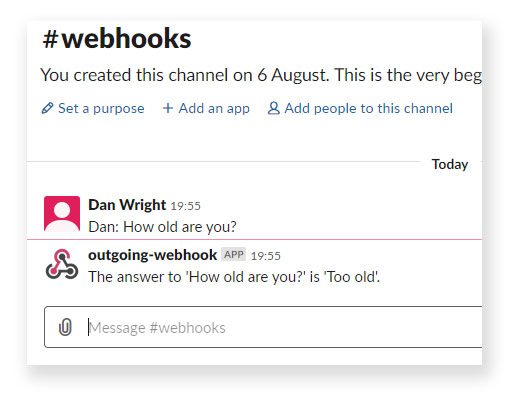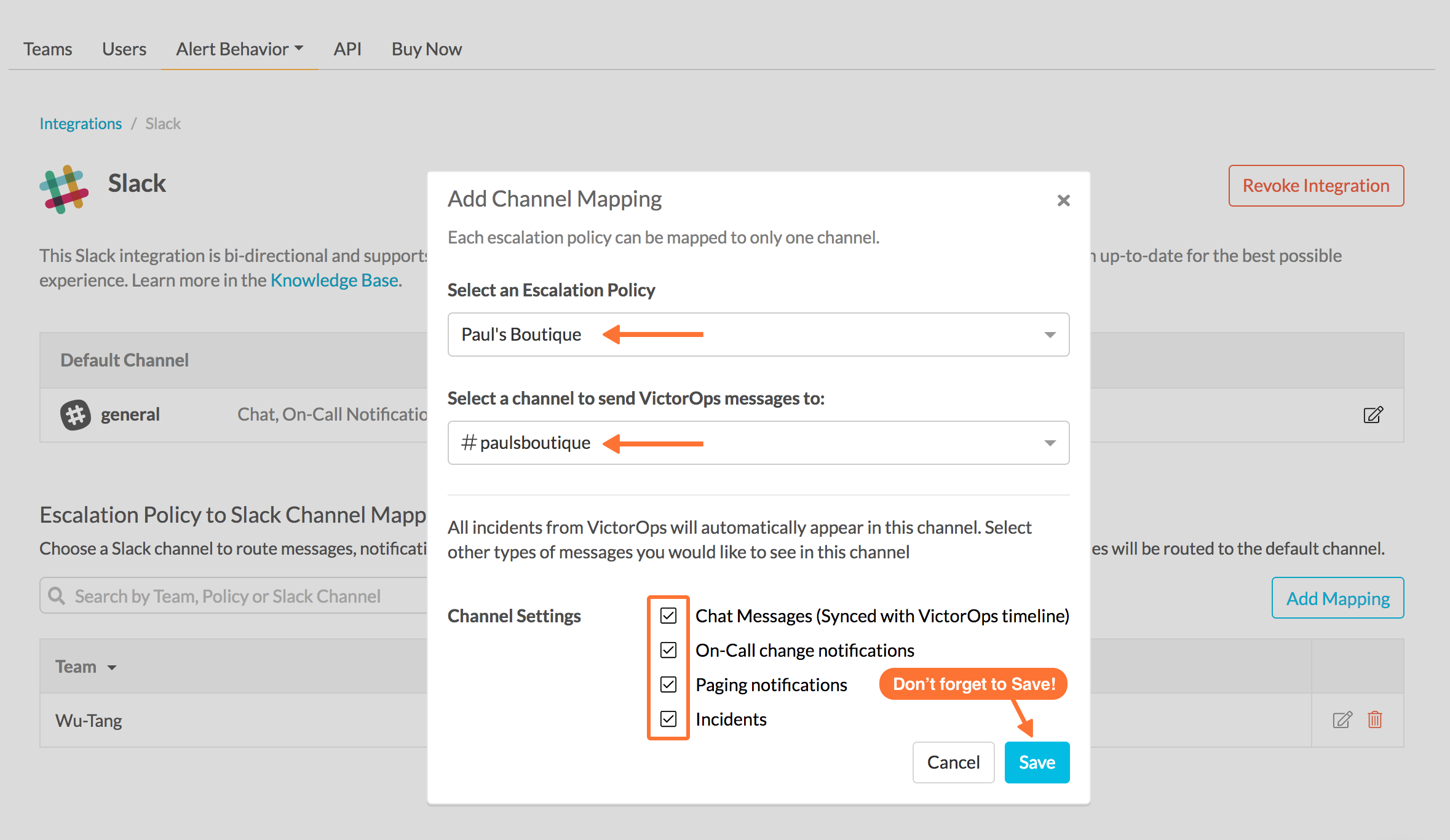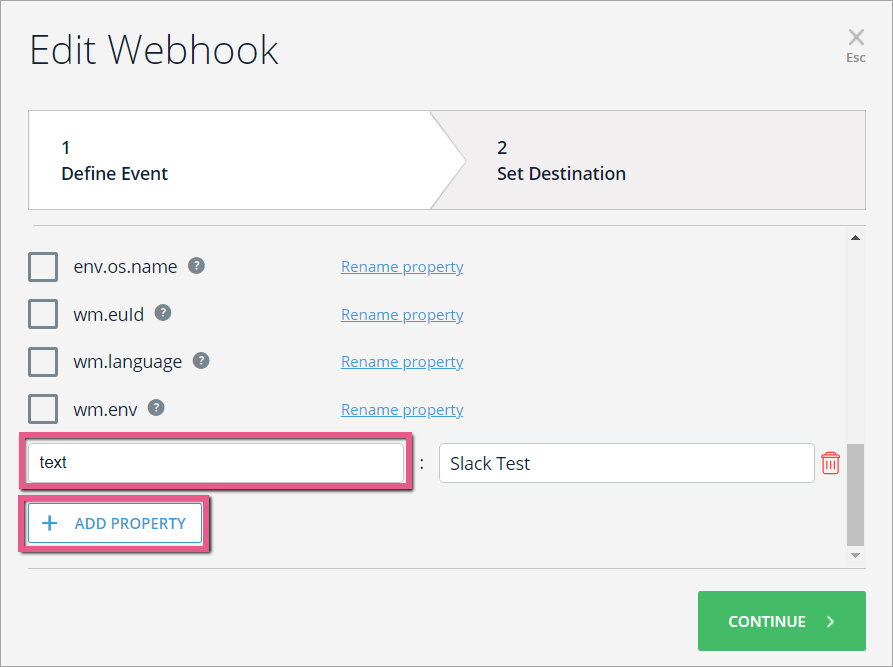
Complete this step by clicking Create App button.

Select your workspace where you want to deploy the app. For our example, let’s call it super_messenger. You can locate Create an app button on the page, and select From scratch. Once you log into your slack account, you can use this link ( ) to enter the Slack API main page. Step1: Create a Slack app & Slack channel:įirst, we want to create the Slack app that handles all Webhook requests and a Slack channel to receive all the messages that are being sent to Webhook. Since Webhook is a one-way communication to Slack, it would not require read access to Slack messages. If you are looking to apply this method to your Slack workplace, I highly recommend checking in and obtaining approval from your IT Admin first. Slack cannot send messages back to the logic. Limitation: The logic only sends the message to Slack one way.

Slack Webhook (A good explanation of Webhook: ).Assuming you have already provided the slack-token (via parameter or environment variable) you can now instruct Atlantis to send apply events to Slack. Add the app to Created channel or existing channel ( click channel name then tab integrations, there Click "Add apps"Īfter following the above steps it is time to configure Atlantis.

If you don’t see this option in Workflow Builder, find an owner or admin to ask for help.

Create a channel in your Slack workspace (e.g. Note: Owners and admins can restrict access to creating workflows using webhooks.Copy the Bot User OAuth Token and provide it to Atlantis by using -slack-token=xoxb-xxxxxxxxxxx or via the environment ATLANTIS_SLACK_TOKEN=xoxb-xxxxxxxxxxx.Install the app onto your Slack workspace.Scroll down to Scopes | Bot Token Scopes and add the following OAuth scopes:.Select From scratch in the dialog that opens.Configure Atlantis to send notifications to Slack.Currently only apply events are supported.


 0 kommentar(er)
0 kommentar(er)
